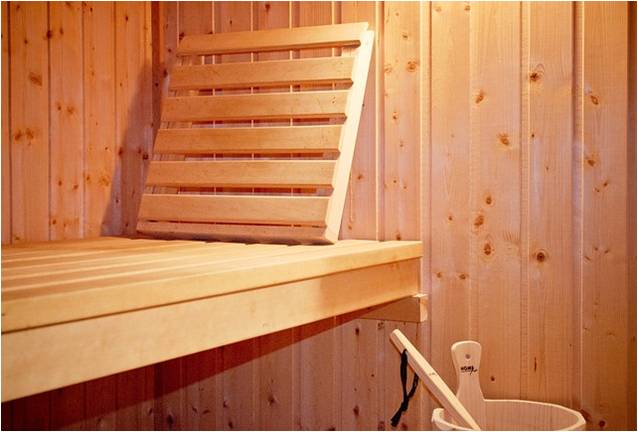Calling all athletes and fitness enthusiasts! Want to take your performance, recovery, and injury prevention to the next level? Look no further than the sauna! In this article, we’ll explore how saunas can enhance athletic endeavors. From boosting endurance and aiding muscle recovery to preventing injuries, saunas have a lot to offer. Get ready to discover the science behind this age-old practice and unlock the secrets to maximizing your athletic potential. Let’s dive in!
How Saunas Affect the Body’s Physiology?
Saunas work their magic by raising your body temperature and inducing a controlled form of hyperthermia. As you expose yourself to the heat, your blood vessels dilate, leading to increased circulation and oxygen delivery throughout your body. This process stimulates your cardiovascular system, promotes sweating to remove toxins, and triggers the release of endorphins, creating a soothing and revitalizing effect. The combination of these physiological responses helps enhance your overall well-being and can have positive impacts on athletic performance and recovery.
Sauna’s Impact on Cardiovascular Health and Endurance.
Saunas have a profound impact on cardiovascular health and endurance. Regular sauna use can improve cardiovascular function by increasing heart rate, dilating blood vessels, and improving blood flow. These effects mimic the benefits of moderate-intensity exercise, making saunas a valuable tool for athletes looking to enhance their endurance capacity. Additionally, sauna sessions can potentially improve heat tolerance and acclimatization, which can be particularly advantageous for athletes competing in hot environments or endurance events.
Heat Exposure and Muscle Recovery.
Heat exposure in saunas plays a crucial role in aiding muscle recovery. The elevated temperature in saunas helps to increase blood flow to the muscles, promoting the delivery of essential nutrients and oxygen. This enhanced circulation helps to flush out metabolic waste products, such as lactic acid, which can contribute to muscle soreness and fatigue. Furthermore, the heat from saunas can help relax muscles, relieve tension, and potentially facilitate faster repair and regeneration processes, allowing athletes to recover more efficiently between training sessions.
Reduced Muscle Soreness and Inflammation.
Saunas have been found to play a significant role in reducing muscle soreness and inflammation. The heat exposure in saunas can help increase blood flow and promote the release of endorphins, which have natural pain-relieving properties. This can alleviate muscle soreness and discomfort experienced after intense workouts. Moreover, saunas may also help decrease inflammation by reducing pro-inflammatory markers and enhancing the production of anti-inflammatory substances, potentially aiding in the recovery process and accelerating muscle healing.
Saunas for Injury Prevention.
Saunas can contribute to injury prevention in athletes through several mechanisms. The heat exposure in saunas helps to increase flexibility and joint mobility, reducing the risk of strains and sprains. Saunas also promote improved blood circulation, which aids in tissue oxygenation and nutrient delivery, supporting overall tissue health and resilience. Additionally, the relaxation and stress-reducing effects of saunas can help athletes manage mental and physical stress, which can be a contributing factor to injury susceptibility. By incorporating saunas into their routine, athletes can potentially reduce the likelihood of injuries and enhance their overall athletic longevity.
Sauna for Flexibility and Joint Mobility.
Saunas play a beneficial role in improving flexibility and joint mobility in athletes. The heat from saunas helps to increase tissue elasticity and reduce muscle tension, allowing for greater range of motion in joints. This can be particularly helpful before engaging in stretching exercises or athletic activities that require flexibility. Regular sauna use can contribute to enhanced joint mobility over time, promoting better movement mechanics and reducing the risk of injuries related to restricted range of motion.
Improved Circulation and Tissue Oxygenation.
Saunas have a significant impact on enhancing circulation and oxygenation of tissues in the body. The heat exposure in saunas causes blood vessels to dilate, resulting in increased blood flow to muscles, organs, and peripheral tissues. This improved circulation allows for better delivery of oxygen, nutrients, and immune cells to the tissues, supporting their overall health and function. The enhanced oxygenation and nutrient supply provided by saunas can aid in tissue repair, recovery, and regeneration, benefiting athletes in their performance and reducing the risk of tissue-related injuries.

Specific Injuries that Benefit from Sauna.
Sauna use can potentially benefit athletes recovering from various types of injuries. Here are a few examples:
- Muscle Strains: Saunas can aid in the recovery of muscle strains by promoting blood flow, relaxing muscles, and reducing inflammation. Athletes with strains in the hamstrings, quadriceps, or other muscle groups may find sauna sessions helpful in accelerating the healing process.
- Joint Sprains: Saunas can contribute to the recovery of joint sprains by improving circulation and promoting relaxation. Injuries such as ankle sprains or wrist sprains may benefit from sauna use as part of a comprehensive rehabilitation program.
- Tendonitis: Saunas can provide relief for athletes dealing with tendonitis, which involves inflammation of tendons. The heat exposure can help reduce pain, increase blood flow to the affected area, and potentially enhance healing of the inflamed tendons.
- Overuse Injuries: Athletes experiencing overuse injuries like stress fractures or tendinopathies can find sauna sessions beneficial. The increased blood circulation and heat can aid in promoting healing, reducing inflammation, and relieving associated pain.
Optimal Timing and Duration of Sauna.
The optimal timing and duration of sauna sessions can vary depending on the intended purpose, whether it’s pre-workout, post-workout, or on rest days. Here’s a general overview:
- Pre-Workout: If using a sauna before a workout, it’s recommended to keep the session relatively brief, typically around 10-15 minutes. This helps warm up the muscles, increases blood flow, and enhances flexibility. However, it’s important to allow sufficient time to cool down and rehydrate before starting your exercise routine.
- Post-Workout: Sauna sessions after a workout can aid in muscle recovery and relaxation. Aim for a slightly longer duration, around 15-20 minutes, to take advantage of the heat’s benefits. This helps promote blood flow, flush out metabolic waste products, and alleviate muscle soreness. Remember to rehydrate adequately afterward to replenish lost fluids.
- Rest Days: On rest days, longer sauna sessions of 20-30 minutes or more can be beneficial for relaxation, stress reduction, and overall well-being. The extended heat exposure helps induce a deeper state of relaxation, allowing the body to unwind and recover. However, it’s essential to listen to your body and not overexert yourself in the sauna.
Sauna Safety Precautions.
Sauna safety and taking necessary precautions are essential for a positive and safe experience. Here are some key points to keep in mind:
- Hydration: Stay well-hydrated before, during, and after sauna sessions. Drink plenty of water to replenish the fluids lost through sweating.
- Time Limits: Avoid spending excessive time in the sauna to prevent overheating. Start with shorter sessions and gradually increase the duration as you become more accustomed to the heat.
- Temperature Awareness: Be aware of the sauna’s temperature and your own tolerance. Ensure the sauna temperature is within a comfortable range and be cautious if feeling lightheaded, dizzy, or experiencing any discomfort.
- Clothing: Use a towel or sit on a sauna mat to protect your skin from direct contact with hot surfaces. Wear light, breathable clothing or a towel to maintain comfort and allow for proper sweat evaporation.
- Breaks: Take regular breaks during sauna sessions to cool down and allow your body to regulate its temperature. Step out of the sauna if you feel excessively overheated or uncomfortable.
- Medical Considerations: If you have any underlying health conditions or are pregnant, consult with a healthcare professional before using saunas. Certain medical conditions may be contraindications or require specific precautions.
- Alcohol and Medications: Avoid consuming alcohol or taking medications that may impair your body’s ability to regulate temperature or increase the risk of dehydration while using saunas.
- Personal Hygiene: Maintain good hygiene in saunas by showering before and after sessions, and using clean towels or sitting on your personal towel.
Remember, sauna usage is a personal choice, and it’s important to listen to your body. If you feel unwell or experience discomfort, exit the sauna and seek medical attention if necessary. By following these safety precautions, you can enjoy the benefits of saunas while prioritizing your well-being.
Bottom Line.
In conclusion, saunas offer athletes a myriad of benefits, including improved cardiovascular health, enhanced endurance, faster muscle recovery, reduced muscle soreness, and even injury prevention. By incorporating saunas into their training routines with proper timing and duration, athletes can optimize their performance and overall well-being. However, it’s crucial to prioritize safety, stay hydrated, and listen to their bodies during sauna sessions. So, athletes, embrace the power of saunas and let them be your secret weapon on your journey to success. Keep sweating and reaching new heights in your athletic endeavors!

 Workout
Workout
 Meditation
Meditation


 Stories
Stories


 Podcast
Podcast E-book
E-book













